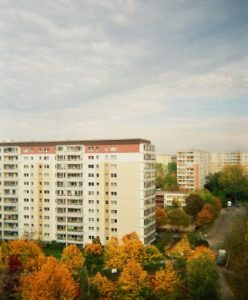Influences from bordering neighborhoods and recent intervention are slowly changing its features. Through collaboration with local partner 4change, Tesserae is involved in several projects that have their research focus here, namely URBEX and COMENSI. WHERE AND WHEN? Bairro Da Ajuda, Lisbon, Portugal. From 2018. WHAT’S GOING ON? The BairroAjuda is one of the 25 local municipalities/parishes that constitute […]
Influences from bordering neighborhoods and recent intervention are slowly changing its features. Through collaboration with local partner 4change, Tesserae is involved in several projects that have their research focus here, namely URBEX and COMENSI.

WHERE AND WHEN?
Bairro Da Ajuda, Lisbon, Portugal. From 2018.
WHAT’S GOING ON?
The BairroAjuda is one of the 25 local municipalities/parishes that constitute the city of Lisbon, belonging to the Western Zone of the capital, with 2.88 km² of area and 15 617 inhabitants.
Topographically, Bairro da Ajuda has a difficult configuration: it lies on the slopes of the hills along Tagus river and it is crossed by several streams, whose waterbed creates physical obstacles and discontinuities, which make circulation and accessibility of the bairro somewhat difficult, a feature that is furtherly enhanced by the haphazard presence of public institutions, churches, palaces, and many private walls.
Moreover, in Ajuda are found two social housing blocks born as re-settlements – Casalinho and 2 de Maio – and a third, Rio Seco, that is an aged and urbanistically chaotic neighbourhood. All of them have been neglected by local and social policies until the recent BIC-ZIP programs.
Gentrification, pushed by real estate speculation in nearby areas and touristification, is threatening the popular identity of low-income population, obstacling the demographic renovation in the last years, as young people are no longer able to find a house here.
4change started intervention in 2014, and through the COMENSI project the Bairo da Ajuda Community Atlas is now collecting memories, stories, ideas and the wishes from residents to envision the future of this neighbourhood – through participatory actions, the “Ideas for the Decade” Laboratories, a mentoring programme and other community hub activities.


